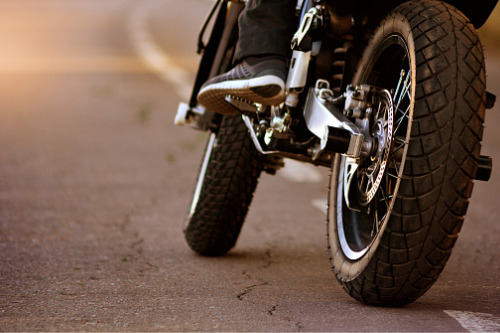

Motorcycle sales across Canada were up 41.8% through May 31, accounting for an increase of 10,895 units compared to the same period last year, according to the Motorcycle and Moped Industry Council (MMIC). This follows a two-year trend of booming motorcycle sales and a great influx of new riders hopping into the saddle, especially during the COVID-19 pandemic when many had motorcycle epiphanies and the spare cash to make their two-wheeled dreams come true.
While this influx of new riders is great for the motorcycle community, there remains a lot of misinformation with regard to the demographic of the modern-day rider, the types of bikes to start on, training courses, and insurance rates, according to Ronn Calderon, business development manager for NFP.
“I don’t know anybody who has bought a car without a driver’s license, but people do this with motorcycles all the time,” said Calderon, has been riding motorcycles for 16-years and serving as a motorcycle risk specialist for the past six. “They buy the bike, they get the license, and only then do they think about training and getting insured. It’s completely backwards – and that’s due to the huge amount of misinformation out there for new riders. People are buying bikes completely uninformed, and that’s where the problems start.”
Calderon is a huge advocate of motorcycle training and emphasizes that all riders (regardless of experience) can never have enough. But during the pandemic, it became difficult for new riders to secure training, which led to a rise in people buying bikes and seeking insurance to get on the road without any training. Some insurers are willing to allow this, but they charge extremely prohibitive rates in order to do so.
“It’s dangerous [enabling] new riders to get on the road with no training,” said Calderon. “There’s a learning curve to being out on a motorcycle in traffic. If [the only pre-requisite to getting on the road] is a multiple choice written test, that’s an accident waiting to happen. Even though we have the ability at NFP to get new riders insured without any training, we won’t do it, because it’s people’s lives that are at risk. There are companies that will say ‘yes’, but the premiums are ridiculously high - and for good reason.”
As head of NFP’s motorcycle division, Calderon gets calls on a daily basis from new riders who don’t understand why their motorcycle insurance premiums are so high. Most of them, he said, have not completed a training course. Others have fallen into the trap of buying the biggest, shiniest, most powerful sport bike possible for their first ever motorcycle. This, according to Calderon, is like learning to drive in a Formula 1 racing car, and equates to much higher risk than learning on a more appropriate starter bike.
“Nobody should be learning to drive in an F1 car, and likewise for motorcycles,” he told Insurance Business. “The manufacturers have started to take note of that. Because of the prohibitive insurance rates on [super] sport bikes, their dealership sales for these bikes have dropped significantly. So, manufacturers have started making motorcycles that still have that sporty look or feel, but they’re actually functional for the real world, the engine’s tuned down a little bit, the ergonomics are more comfortable, and the bikes are more usable. The companies that haven’t switched to that type of model are losing sales.”
When it comes to advising about motorcycles, Calderon treats all customers as if they are friends and fellow riders, and his focus is always on education, training, and rider safety.
“Most new riders, when they’re calling an insurance broker for a quote, they’re also hoping (even if they don’t explicitly ask for it) for the broker to give them some tips, some help, and to point them in the right direction,” said Calderon. “A typical broker will offer a quote based on information on their computer screen, but they might not know anything about the different bike models, safety gear, and training courses. But this isn’t just about dollars and cents; it’s life or death out there.
“Typically, the best advice we can give people is to start small. Smaller is always cheaper, smaller is better to learn on, riders progress quicker, small bikes are easier to manage, and then you can start to move up to something bigger and maybe more powerful as you gain more experience. Rather than making a quick sale, we really focus on getting new riders informed about how all this works, and we want to ensure they have the right training and equipment to get out on the road safely. That is always our number one priority.”
